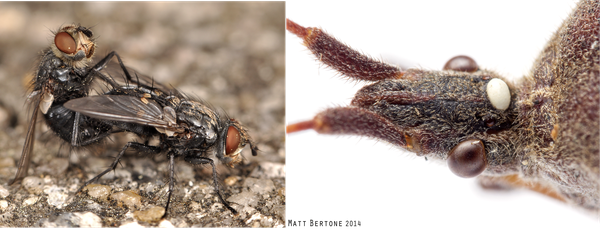Fascination About Eco Bed Bug Exterminators Dc
Fascination About Eco Bed Bug Exterminators Dc
Blog Article
Things about Eco Bed Bug Exterminators Dc
Table of ContentsEco Bed Bug Exterminators Dc Things To Know Before You Get This10 Simple Techniques For Eco Bed Bug Exterminators DcThe Of Eco Bed Bug Exterminators DcEco Bed Bug Exterminators Dc - The FactsThe Best Guide To Eco Bed Bug Exterminators Dc
Due to the fact that chemicals are toxic, they are additionally possibly harmful to humans, pets, other organisms, and the atmosphere. As a result, individuals that utilize pesticides or regularly been available in call with them have to recognize the loved one poisoning, prospective health effects, and preventative actions to reduce direct exposure to the items they utilize. Danger, or danger, of using chemicals is the capacity for injury, or the degree of threat associated with using a pesticide under a given set of problems.
Applicators can reduce or nearly get rid of exposure-- and hence decrease hazard-- by complying with the label guidelines, utilizing individual protective clothes and tools (PPE), and managing the chemical appropriately. More than 95 percent of all pesticide exposures come from facial exposure, mostly to the hands and forearms. By using a set of unlined, chemical-resistant gloves, this kind of exposure can be almost removed.
The hazardous effects that happen from a solitary exposure by any kind of route of entrance are described "acute impacts." The 4 courses of exposure are facial (skin), inhalation (lungs), dental (mouth), and the eyes. Severe poisoning is established by examining the facial poisoning, breathing poisoning, and oral poisoning of test pets.
Eco Bed Bug Exterminators Dc - Truths
Severe toxicity is determined as the quantity or concentration of a toxicant-- the a.i.-- called for to kill half of the pets in a test populace. This action is normally expressed as the LD50 (lethal dosage 50) or the LC50 (deadly concentration 50). In addition, the LD50 and LC50 worths are based on a solitary dose and are taped in milligrams of pesticide per kg of body weight (mg/kg) of the examination animal or in components per million (ppm).
The lower the LD50 or LC50 worth of a chemical item, the greater its toxicity to humans and pets. Pesticides with a high LD50 are the least toxic to people if utilized according to the instructions on the item tag. The chronic toxicity of a pesticide is determined by subjecting guinea pig to lasting exposure to the energetic component.
The chronic poisoning of a pesticide is extra tough than intense poisoning to identify with laboratory analysis. Products are classified on the basis of their relative intense poisoning (their LD50 or LC50 values). Chemicals that are identified as extremely toxic (Poisoning Group I) on the basis of either oral, dermal, or inhalation toxicity have to have the signal words DANGER and toxin published in red with a head and crossbones icon prominently showed on the front panel of the plan tag.
The severe (solitary dose) oral LD50 for chemical products in this group ranges from a trace total up to 50 mg/kg. Exposure of a couple of decreases of a product taken orally could be deadly to a 150-pound individual. https://www.imdb.com/user/ur179001523/. Some chemical products have simply the signal word DANGER, which informs you nothing regarding the severe toxicity, simply that the item can create severe eye damage or serious skin irritability
Excitement About Eco Bed Bug Exterminators Dc
In this classification, the acute dental LD50 ranges from 50 to 500 mg/kg. A teaspoon to an ounce of this product could be fatal to a 150-pound person (bed bug spray). Chemical items identified as either a little harmful or fairly harmless (Toxicity Groups III and IV) are required to have the signal word CAUTION on the chemical label

The Eco Bed Bug Exterminators Dc Ideas
All pesticide toxicity chemical, including the LD50, can be found on discovered product's Item Safety Data Security InformationMSDS). Pesticide labels and MSDS can be obtained from sellers or makes. In addition, many products also have information that can be located on the net. The signs of pesticide poisoning can range from a light skin inflammation to coma or perhaps fatality.
Individuals additionally vary in their level of sensitivity to various degrees of these chemicals. Some people might reveal no response to a direct exposure that might create serious illness in others (bed bug spray). Due to the fact that of potential wellness worries, pesticide customers and handlers must identify the typical symptoms and signs of pesticide poisoning. The impacts, or signs and symptoms, of chemical poisoning can be broadly specified as either topical or systemic.
See This Report about Eco Bed Bug Exterminators Dc
Dermatitis, or inflammation of the skin, is accepted as the most generally reported topical effect associated with chemical direct exposure. Some individuals often tend to cough, wheeze, or sneeze when subjected to pesticide sprays.
This signs and symptom normally subsides within a couple of mins after an individual is eliminated from the exposure to the toxic irritant. A response to a chemical product that causes a person not only to sneeze and cough however additionally to create extreme acute respiratory system signs is extra most likely to be a real hypersensitivity or allergic reaction.
Systemic impacts are fairly various from topical impacts. They usually happen away from the initial point of call as an outcome of moved here the pesticide being taken in into and dispersed throughout the body.
Report this page